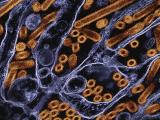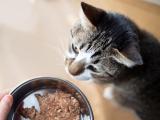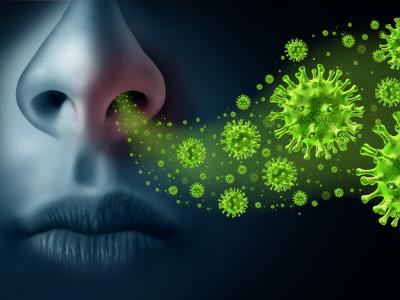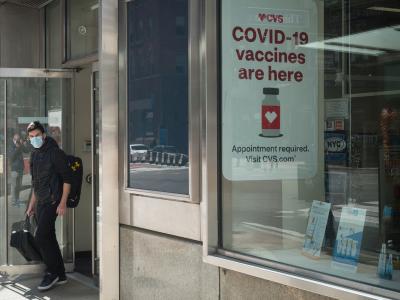Aug 23, 2010
New Zealand, India continue to log novel H1N1 cases
New Zealand has logged 501 hospitalizations due to confirmed 2009 pandemic H1N1 flu so far this year, its Ministry of Health (MOH) reported today, including 77 people admitted to intensive care units (ICUs), 16 of whom are currently in ICUs. One person has died from novel H1N1 in the past week. A New Zealand Press Association (NZPA) report said the patient was a woman from Taranaki in her 50s who had underlying medical conditions. Meanwhile, India's novel H1N1 figures for the week ending Aug 22 showed 1,335 new lab-confirmed cases, including 79 deaths, according to the government's Press Information Bureau (PIB). Maharashtra state had the most deaths (40), followed by Gujarat (12) and Karnataka (8). States reporting the most cases were Maharashtra (411), Karnataka (291), and Delhi (257). Though Gujarat logged 12 H1N1 deaths, it reported only 46 confirmed cases.
Aug 23 NZPA report
Aug 23 India PIB release
Study: Workplace hand sanitizer may lower illness rates
A German study of 129 office workers showed that frequent use of alcohol-based hand sanitizers effectively reduced colds, coughs, and fevers, as well as absenteeism. The study, which covered more than a year and was published today in the open-access journal BMC Infectious Diseases, tabulated self-reported days of illness as well as days of missed work because of illness for a variety of symptoms (others assessed included sinusitis, bronchitis, pneumonia, and influenza, the last two requiring a professional diagnosis). The intervention group of 64 workers were instructed to use hand sanitizer at least five times a day, especially after potentially high-transmission activities such as bathroom use, nose blowing, and contact with a sick colleague or customer. Members of the 65-member control group did not change their hand-hygiene practices. The study found a statistically significant reduction in days ill due to the common cold, cough, or fever in the hand-sanitizer group, as well as a significant reduction in absence due to bronchitis or diarrhea. While admitting limitations of their study, such as a 16% response rate, the authors conclude, "We were able to demonstrate that hand disinfection can easily be introduced and maintained outside clinical settings as a part of the daily hand hygiene."
Aug 23 press release regarding BMC Infect Dis
Study finds H5N1 can linger on loose feathers
Japanese researchers investigating the persistence of H5N1 avian influenza virus in contaminated tissues from infected birds found that the virus persisted longest in feathers, as long as 160 days at 4°C (39°F) and 15 days at 20°C (68°). The findings appear in Applied and Environmental Microbiology. They infected 4-week-old domestic ducks with different H5N1 clades, then collected feathers, drinking water, and feces 3 days after inoculation, storing them at the two different temperatures. They investigated viral persistence over 360 days using virus isolation and reverse transcription polymerase chain reaction testing. Viral RNA in the birds' feathers was more stable than infectivity, the researchers found. They concluded that detached feathers from H5N1-infected domestic ducks can be an environmental contamination source and function as fomites that carry high viral loads.
Aug Appl Environ Microbiol abstract
Antisense therapy for Ebola, Marburg promising in animal trials
An experimental antisense therapy protected monkeys infected with Ebola and Marburg viruses, even when given 1 hour after exposure, according to researchers writing in Nature Medicine. The study was conducted at the US Army Medical Research Institute of Infectious Diseases (USAMRIID) in Fort Detrick, Md.. Researchers first tested different antisense phosphorodiamidate morpholino oligomer (PMO) variations against mice and guinea pigs that were infected with the Ebola virus. Antisense drugs are designed to enter cells and block viral replication, allowing the body to mount an immune response. A variation known as AVI-6002 showed a survival rate of more than 90% in animals that were treated before or after infection. In proof-of-concept studies, researchers treated 9 rhesus monkeys 30 to 60 minutes after they were exposed to a lethal Ebola virus dose. Five of 8 survived, and 1 was untreated. In a multidose arm of the study, 3 of 5 monkeys in each treatment group survived when they received a dose of 40 mg/kg of body weight. They repeated the process in cynomolgus monkeys infected with Marburg virus using another variation that they developed through screening, AVI-6003, which also produced more-than-90% survival. All 13 of the animals treated 30 to 60 minutes after lethal Marburg virus challenge survived. Currently there are no treatments or vaccines against Ebola or Marburg viruses. Col John P. Skvorak, USAMRIID commander, said in a press release that not only are the postexposure treatment findings promising, they lend support for broader investigation of broader PMO applications.
Aug 22 Nature Medicine abstract
Aug 22 USAMRIID press release

















